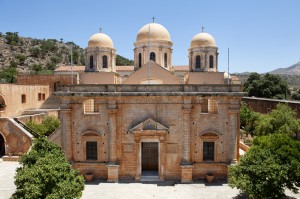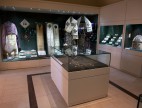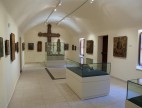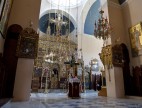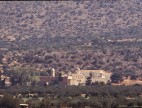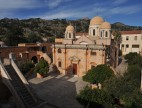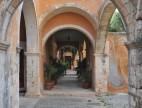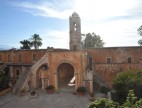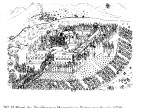Agia Triada (Holy Trinity) Monastery
This is situated at Akrotiri, a location planted with olive groves, vineyards and cypress trees. Architecturally it is one of the most important examples of the Cretan Renaissance. According to tradition it was funded by brothers Jeremiah and Lorenzo of the old Venetian family of the Zagaroloi, who were monks in the nearby monastery of Guverneto.
The land owners of Akrotiri offered extensive areas for building the new monastery and Jeremiah travelled to Mt. Athos to copy the construction plans for the new monastery.
During the Greek Liberation Revolution of 1821, the Ottomans burnt down the building, which was deserted for a few years, and during that period the documents kept in its archives were lost. The monastery was renovated in 1830. In 1892 the Church School (Ierodidaskaleion), which trained famous priests and teachers, was also erected here and in 1930 it evolved into a seminary (Ieratiki Scholi).
The Holy Trinity (Agia Triada) Monastery is probably the most impressive monastic complex of the final period of Venetian rule on Crete, due to both its scale and architectural form. It combines elements of the Orthodox monastic style with western architectural forms and this reflects the spirit of convergence of the two dogmas on the island of Crete. The fortress-like complex forms a huge rectangle with an impressive Catholicon church in the centre and two small chapels, in the styleof Orthodox monasteries. Its prevailing features are austere symmetry and use of classic antiquity forms.
The small museum displays relatively few heirlooms rescued from the continued historical adventures of the monastery, mainly icons, vestments, holy utensils, a few manuscripts, incunabula and official documents.

